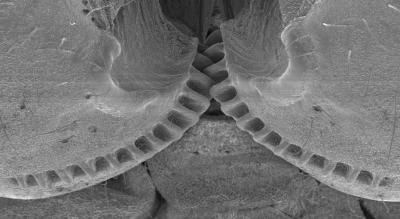
Life has evolved to evolve. That’s the conclusion drawn by two Rice University scientists who have designed a computer simulation to test the idea that evolvability – the likelihood of genetic mutation – is a trait that can itself be favored or disfavored through the process of natural selection. The study appears in the Proceedings of the National Academy of Sciences.
Researchers Michael Deem and David Earl drew their conclusions from a computer simulation that recorded how much and how rapidly proteins mutated based on external changes in their environment. As the researchers ramped up the frequency and severity of environmental changes they saw an increased likelihood of survival among proteins that mutated more frequently.
“Selection for evolvability would help explain a growing body of experimental results including the evolution of drug resistance in bacteria, the fact that some immune system cells mutate much more rapidly than other cells in our bodies, as well as why some bacteria and higher-order organisms have a tendency to transpose or swap relatively long sequences of DNA,” said Deem.
Deem and Earl’s argument centers on the idea that the ability to reorder genes or to cause large-scale genetic change are themselves genetic traits, traits that are subject to selection like any others.
Consequently, many observations within evolutionary biology that were heretofore considered evolutionary happenstance or accidents, may in fact be explained by selection for evolvability. Two primary examples of this can be found in the escalating “arms race” that has been documented between pathogens and the immune systems in people and other higher-order vertebrates. Deem and Earl argue that wide variation among bacteria and other antigens has put selective pressure on our immune systems to rapidly adapt methods of identifying and attacking invaders. Similar observations on the rapid mutability among flu viruses and other invading pathogens provide additional evidence, they said.
“The implication is that the drugs we have developed to fight invading pathogens also confer selective pressure on the evolvability of the pathogens themselves,” Earl said. “In drug design, it is important to consider this and to look for ways to minimize or counteract this driving force for drug resistence.”


















Comments are closed.